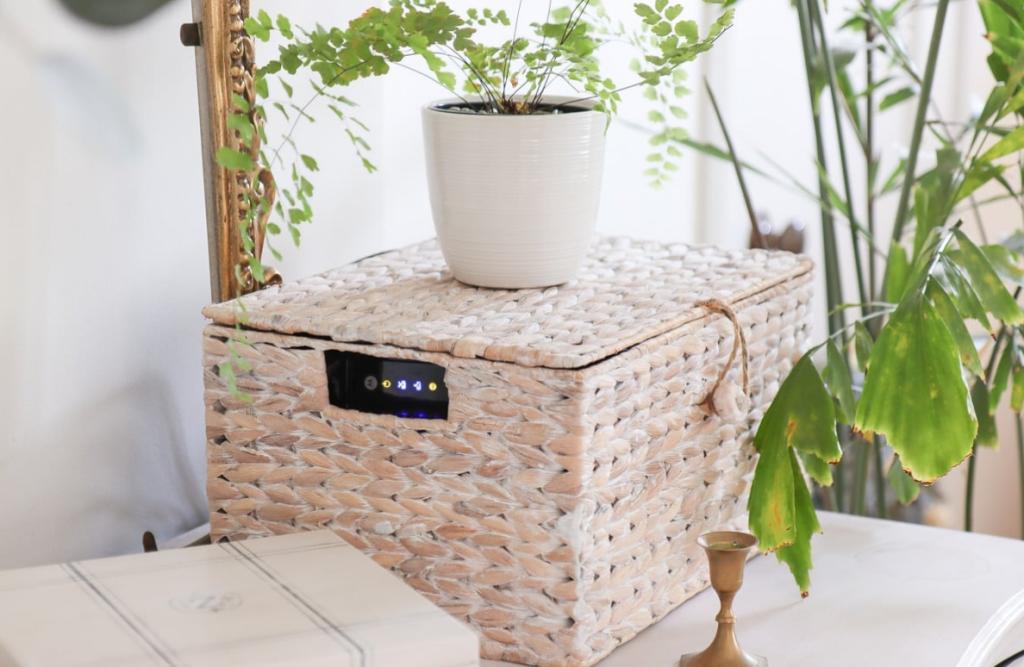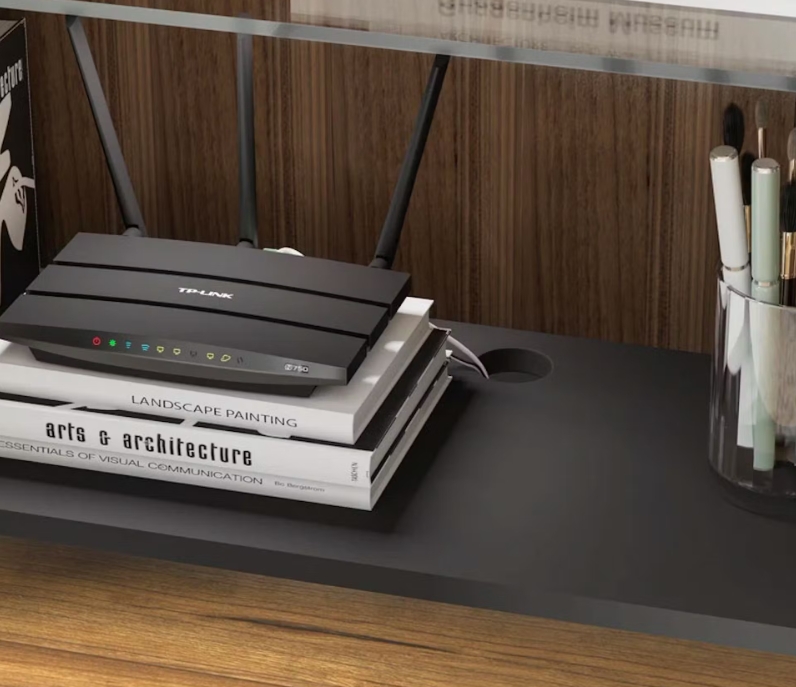Hiding your Internet router can be a smart way to enhance the aesthetics of your home or office while maintaining a clean and organized look. However, when considering how to hide Internet router devices, it's essential to ensure that performance and signal strength remain uncompromised. Poorly concealing your router can lead to connectivity issues, slow speeds, and unnecessary frustration. In this guide, we’ll explore various methods to hide your router effectively without sacrificing functionality. From choosing appropriate materials to considering ventilation and accessibility, this comprehensive guide will help you achieve a visually appealing setup while ensuring optimal Internet performance. Let’s look at the best ways to blend your router into your decor without compromising its effectiveness.

Why Hide Your Internet Router?
There are multiple reasons why you might want to hide your Internet router. First and foremost, routers can be unsightly, disrupting the aesthetic harmony of your living or working space. The bulky design, flashing lights, and cables can ruin the sleek look of your interior decor. Secondly, hiding your router can help reduce the risk of accidental tampering or damage caused by pets, children, or everyday activities. Additionally, by understanding how to hide Internet router devices, you can effectively reduce potential risks without losing signal quality. Another benefit of concealing your router is enhancing security. Keeping it out of plain sight makes it less likely to be tampered with by unauthorized individuals. Finally, the strategic placement of your router can protect it from dust buildup, prolonging its lifespan and ensuring long-term reliability.
Factors to Consider Before Concealing Your Router
Ventilation and Heat Dissipation
When learning how to hide Internet router devices, one of the most critical factors to consider is ventilation. Routers generate heat during operation, and inadequate ventilation can cause overheating, leading to performance issues or even permanent damage. It’s essential to choose a hiding spot that allows sufficient airflow to prevent heat buildup. Avoid placing your router in completely enclosed spaces such as drawers, metal boxes, or areas without ventilation holes. Instead, opt for decorative boxes with perforations or open-backed shelves that allow heat to dissipate effectively. Regularly clean the area around your router to prevent dust accumulation, which can further obstruct airflow and contribute to overheating.
Material Interference with Wi-Fi Signals
The materials you use to conceal your router can significantly affect its signal strength. Metals, thick walls, and even glass can interfere with Wi-Fi signals, reducing their effectiveness. When determining how to hide Internet router devices, choose materials that are signal-friendly, such as wood, plastic, or fabric. For instance, decorative boxes made from rattan or bamboo are excellent choices since they allow signals to pass through without much obstruction. Positioning your router near reflective surfaces or large electronic devices can also cause signal interference. To maintain optimal performance, test your Internet speed before and after hiding the router to confirm that the chosen location and materials do not diminish signal strength.
Accessibility for Maintenance
Maintaining your router’s performance requires regular access for tasks like firmware updates, troubleshooting, and resetting. Therefore, accessibility is a crucial factor when deciding how to hide Internet router devices. Avoid placing your router in areas that are difficult to reach or require disassembling heavy furniture for access. Instead, opt for hiding spots that allow quick, convenient maintenance. Wall-mounted enclosures with front access panels or open-back furniture designs offer practical solutions. Additionally, ensure your router’s cables are easily accessible for any adjustments or replacements. Regularly inspect your router’s setup to ensure optimal functionality, and remember that balancing accessibility with aesthetics is key to a successful router-concealment strategy.
Effective Methods to Hide Your Router Without Signal Loss
Using Decorative Boxes or Baskets
One of the simplest and most visually pleasing ways to hide your Internet router is by placing it inside a decorative box or basket. Choose a container that complements your interior design and is made of signal-friendly materials like wood, rattan, or plastic. Drill small holes in the box to ensure proper ventilation and heat dissipation. Additionally, cut openings for cables to exit neatly, minimizing clutter. Position the box in a central location to maintain signal strength and regularly check its performance to ensure there’s no interference. Using stylish, well-ventilated boxes allows you to conceal your router effectively without compromising its signal quality or overall functionality.
Integrating with Furniture Designs
Incorporating your router into your furniture design is an excellent way to hide it without sacrificing signal strength. Bookshelves, credenzas, or desks with open backs provide both concealment and ventilation. Placing your router on a high shelf helps boost signal coverage while keeping it out of sight. Some furniture pieces even come with built-in compartments designed specifically for hiding electronic devices. Make sure there’s enough space for air circulation, and avoid placing the router near metal objects or thick surfaces that can obstruct the signal. This approach ensures that your router remains functional while blending seamlessly into your home’s decor.
Wall-Mounted Enclosures
Wall-mounted enclosures are a practical solution for those looking to hide their Internet router while maintaining accessibility and signal strength. These enclosures are designed to house electronics while allowing adequate airflow to prevent overheating. Choose enclosures made from materials like plastic or wood, which do not interfere with signal transmission. Mount the enclosure in a central, elevated location to enhance coverage throughout your space. Additionally, ensure that the router’s antennas remain unobstructed, as blocking them can significantly reduce performance. By using wall-mounted enclosures, you can successfully conceal your router without compromising its functionality or aesthetic appeal.
Creative Camouflaging Techniques
If you prefer a more creative approach, camouflaging your router as part of your decor is an excellent solution. Hollowed-out books, decorative picture frames, or stylish planters can be repurposed to hide your router effectively. Just make sure these items allow sufficient airflow and do not obstruct your router’s antennas. This method not only maintains signal strength but also adds a unique, personalized touch to your space. Additionally, avoid using metal or glass objects for concealment, as these materials can interfere with signal transmission. Checking your router’s performance regularly ensures that your creative camouflage efforts do not impact your Internet connection.
Common Mistakes to Avoid When Concealing Your Router
When learning how to hide Internet router devices, it’s crucial to avoid common mistakes that can negatively impact performance. Never place your router in completely sealed spaces, such as metal boxes, drawers, or tightly enclosed cabinets, as poor ventilation can lead to overheating and reduced efficiency. Additionally, avoid using materials like metal, concrete, or thick glass, which can significantly obstruct Wi-Fi signals and cause connectivity issues. Another mistake is hiding your router in areas that are difficult to access, complicating essential tasks like maintenance, firmware updates, and troubleshooting. Most importantly, ensure your router’s antennas remain unobstructed to maintain optimal signal strength. Following these guidelines will help you achieve effective concealment without compromising performance.

Conclusion
Successfully learning how to hide Internet router devices without losing signal strength is entirely possible with the right approach. By considering factors such as ventilation, signal-friendly materials, accessibility, and antenna positioning, you can achieve a balance between aesthetics and performance. Whether you opt for decorative boxes, furniture integration, wall-mounted enclosures, or creative camouflaging techniques, testing your router’s performance before and after concealment is essential. Regularly monitor your network’s functionality to ensure it remains strong and efficient. Blending style and practicality allows you to maintain a clean, organized space without sacrificing your Internet connectivity. Implementing these strategies will enhance your home’s appearance while keeping your router functioning optimally.
FAQ
Can hiding my router affect its performance?
Yes, if not done correctly, hiding your router can affect its performance. Ensure adequate ventilation, avoid signal-blocking materials, and maintain accessibility for maintenance to prevent issues.
What materials should I avoid when concealing my router?
Avoid materials like metal, thick concrete, and large appliances. These materials can significantly interfere with Wi-Fi signals, leading to weaker connectivity and reduced performance.
How often should I check my hidden router for maintenance?
It’s advisable to check your hidden router at least once every few months. Regular maintenance includes checking for firmware updates, cleaning dust, and troubleshooting any connectivity issues.
